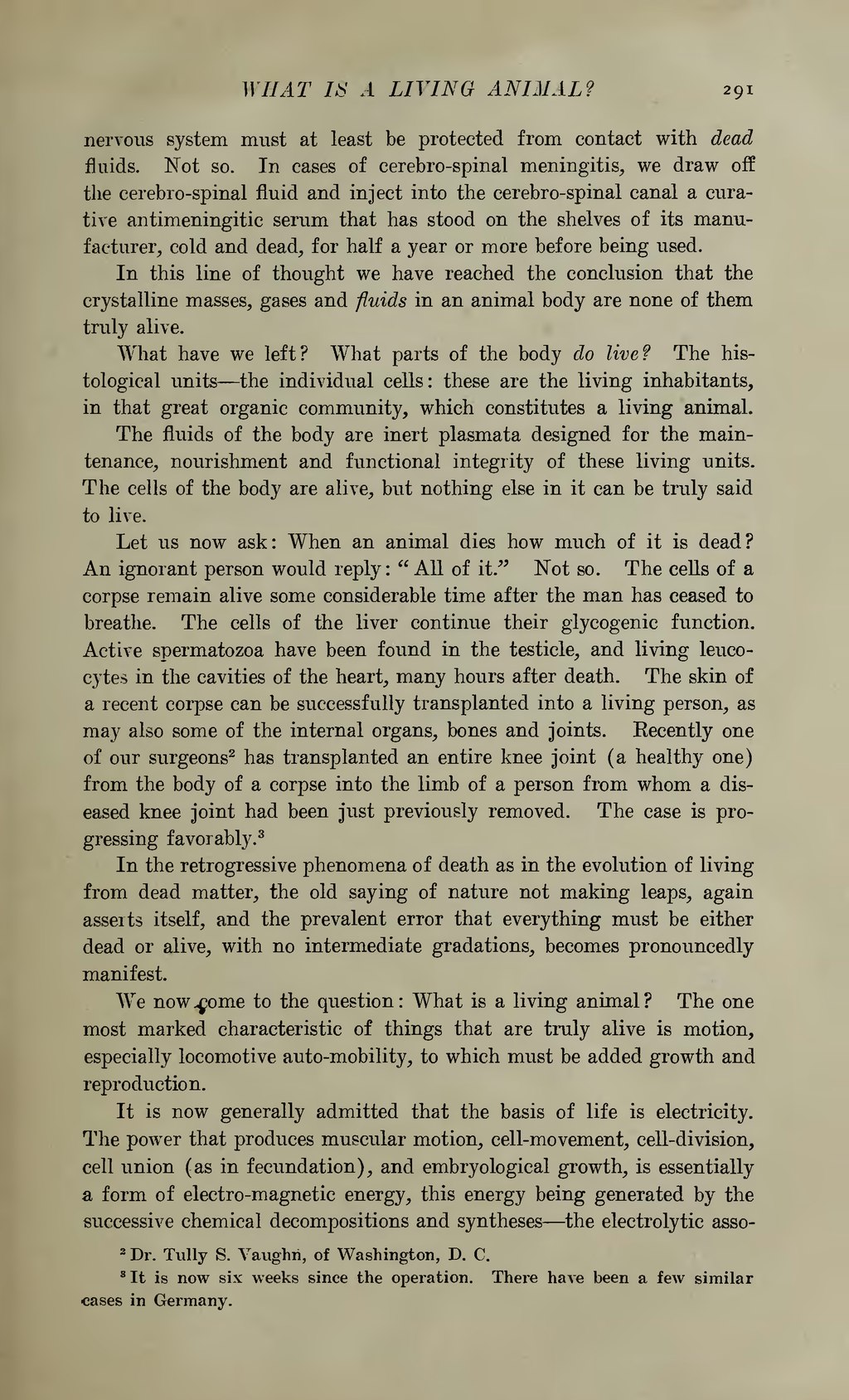nervous system must at least be protected from contact with dead fluids. Not so. In cases of cerebro-spinal meningitis, we draw off the cerebro-spinal fluid and inject into the cerebro-spinal canal a curative antimeningitic serum that has stood on the shelves of its manufacturer, cold and dead, for half a year or more before being used.
In this line of thought we have reached the conclusion that the crystalline masses, gases and fluids in an animal body are none of them truly alive.
What have we left? What parts of the body do live? The histological units—the individual cells: these are the living inhabitants, in that great organic community, which constitutes a living animal.
The fluids of the body are inert plasmata designed for the maintenance, nourishment and functional integrity of these living units. The cells of the body are alive, but nothing else in it can be truly said to live.
Let us now ask: When an animal dies how much of it is dead? An ignorant person would reply: "All of it." Not so. The cells of a corpse remain alive some considerable time after the man has ceased to breathe. The cells of the liver continue their glycogenic function. Active spermatozoa have been found in the testicle, and living leucocytes in the cavities of the heart, many hours after death. The skin of a recent corpse can be successfully transplanted into a living person, as may also some of the internal organs, bones and joints. Recently one of our surgeons[1] has transplanted an entire knee joint (a healthy one) from the body of a corpse into the limb of a person from whom a diseased knee joint had been just previously removed. The case is progressing favorably.[2]
In the retrogressive phenomena of death as in the evolution of living from dead matter, the old saying of nature not making leaps, again asserts itself, and the prevalent error that everything must be either dead or alive, with no intermediate gradations, becomes pronouncedly manifest.
We now come to the question: What is a living animal? The one most marked characteristic of things that are truly alive is motion, especially locomotive auto-mobility, to which must be added growth and reproduction.
It is now generally admitted that the basis of life is electricity. The power that produces muscular motion, cell-movement, cell-division, cell union (as in fecundation), and embryological growth, is essentially a form of electro-magnetic energy, this energy being generated by the successive chemical decompositions and syntheses—the electrolytic asso
